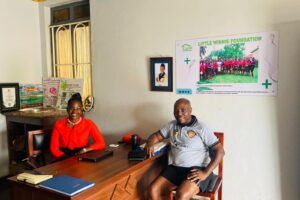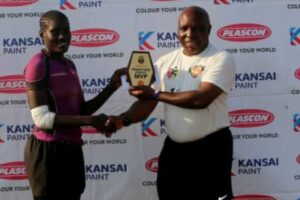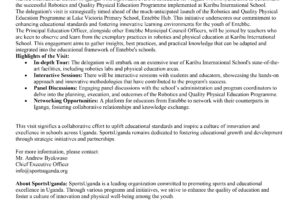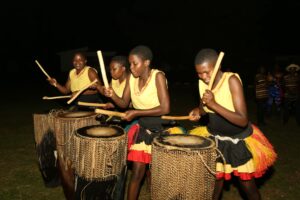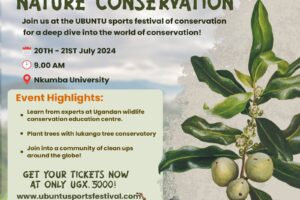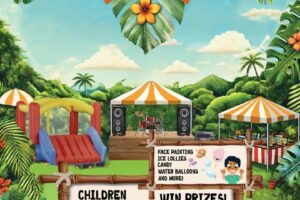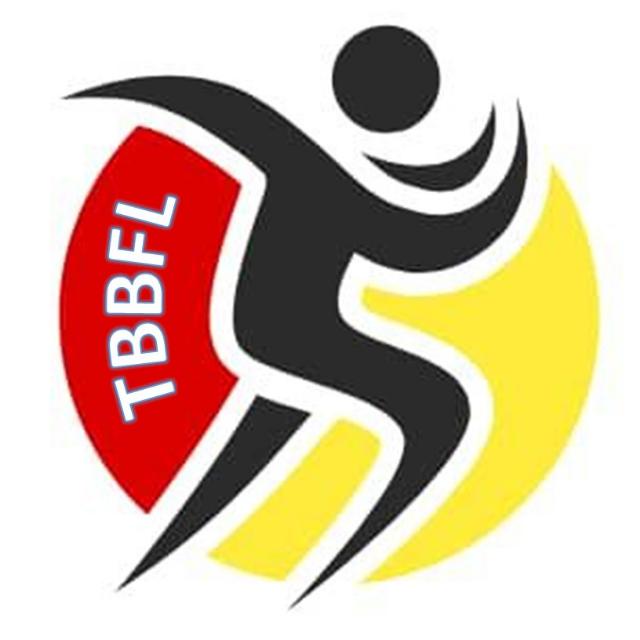TheBestBareFootLeague in the World © (#TBBFL)
BHAG: 1,000,000 Primary School Age Children in Uganda playing in sports and games leagues, skipping, coding and learning through robotics every week!
Preamble
Sports for Health Education Conservation and Tourism
Uganda is a beautiful country with one of the worlds youngest populations!
A well structured youth intervention based on one of nature’s most powerful forces [play] is a must!
The How
Using an initial 16 Spaces, avail equipment with a figure of 100 units each (e.g., 100 footballs, 100 netballs, 100 rugby balls, 100 skipping ropes, etc.) and support Coaches, Teachers and Trainers to implement Coding/Robotics + Quality Physical Education including African Traditional Sports and Games (outdoor and mind games).
League Conversion Tables
Create league tables for each space for each sport to keep track of performance and using a conversion factor, equate points from the league table into two key metrics – Conservation and Conservancy through growing trees from on-site nurseries + Weight linked Waste Clearance (plastics, toxic and other non-biodegradable materials from the ground).
The Zero Dollar Budget Model (Sport for Life Ó)
Identify up to 10 Small and Medium Scale Enterprises (SMEs) to sponsor activities within their own communities – give them online publicity presence and market them to supporters locally, regionally and internationally, in support of the activities.
Considerations
Space
Budget
Equipment and Kit
Practical elements [technical resources – conservation, education, health, tourism]
TREE-GO-TWIN© PROGRAMME
Project Proposal for a Conservation Programme Called Tree-Go-Twin in Uganda where a child plants, looks after and links up with a partner oversees to grow a seedling into a mature tree – caring together.
Implementing Partners
SportsUganda Ltd UK
Rhino Athletics Club Uganda
Umoja Conservation Trust Uganda
Lukango Tree Conservancy Uganda
Community Based Partners
Score Beyond Leadership Organisation, Adjumani, Uganda
Motion Youth Hub, Kazo Bwaise and Bujuuko, Uganda
Sports Organisation of Lugazi, Uganda
Golden Impact SC, Xsabo Stadium, Kati-Kolo, Mukono, Uganda
Karibu International School, Iganga, Uganda
Chickadees Pre-Primary School, Bukandekande, Kitala, Entebbe, Uganda
Introduction:
In today’s rapidly changing world, environmental conservation has become more critical than ever. To combat
deforestation, promote biodiversity, and empower communities, the Conservation Programme focuses on the
concept of growing rather than simply planting trees.
By prioritizing indigenous species of both fruit and medicinal value, capacitating communities and schools through
skill-building, and engaging children globally in collaborative efforts, this program offers a compelling approach to
conservation.
This argument highlights the significance of this initiative and demonstrates how it can yield substantial benefits for
Uganda.
Indigenous Species for Sustainable Impact:
The conservation programme emphasizes the cultivation of indigenous species, such as Mango, Guava, Jackfruit,
Avocado, Jambula, and Mpafu, that hold both nutritional and medicinal value.
By promoting the growth of these species, the programme supports local ecosystems, preserves genetic diversity,
and ensures the survival of traditional knowledge associated with these plants. This approach not only contributes
to environmental sustainability but also provides tangible benefits to local communities, enabling them to harness
the resources of their surroundings for improved health and livelihoods.
Skilling Communities and Schools:
One of the program’s key components is capacity building through skill development. By empowering communities
and schools to create their own nurseries and care for their orchards, the programme fosters self-reliance and a
sense of ownership.
This initiative allows individuals to generate their fruit lots (using the Miyawaki Method), rich in vitamin C, while also
creating potential income streams. Teaching practical skills related to nursery management, agroforestry, and
sustainable farming practices equips participants with knowledge that extends beyond tree planting, ensuring longterm
success and resilience.
Tree-Go-Twin is collaborative Environmental Stewardship:
The innovative Tree-Go-Twin element of the programme harnesses the power of collaboration among children from
different locations globally. By connecting these young environmental stewards, the programme cultivates a shared
sense of responsibility towards native species.
Through collaborative efforts, these children not only “grow” trees together but also minimize the use of trees as
wood fuel and foster a deeper understanding of agroforestry. This global connection nurtures a generation of
environmental leaders committed to reducing damage to the environment and safeguarding our planet for future
generations.
Scalability and Financial Viability:
Uganda possesses a vast potential for successful implementation of the Conservation Programme.
With 15 million school-going children, the program can be strategically implemented in zones, allowing the creation
of nurseries with a capacity of 100,000 seedlings per space.
Considering the estimated budget of $31,000 per space in two seasons, with 50,000 seedlings each season, the
Return on Investment (ROI) analysis demonstrates the cost-effectiveness of the initiative, with each seedling being
valued at approximately $1. This presents a compelling case for both governmental and non-governmental
organizations to invest in this program for widespread impact.
Conclusion:
The Conservation Programme’s emphasis on growing rather than merely planting, focus on indigenous species of
fruit with medicinal value, capacity building and linking children across the globe is it’s most important unique
selling point.
Find out more about the Tree-Go-Twin project.
